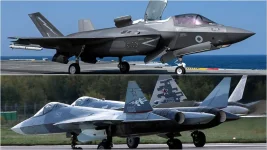- Views: 2K
- Replies: 18

Commodore Anil Jai Singh, a seasoned naval veteran and Vice President of the Indian Maritime Foundation, has voiced concerns over India's recent decision to limit its nuclear attack submarine program to just two vessels.
He argues that a larger program of six submarines, built in tranches of two or three, would offer significant advantages for the Indian Navy and the nation's defence industry.
Commodore Singh believes that a limited program could hinder the Indian Navy's ability to maintain operational readiness and sustain a credible deterrent. With only two submarines, routine maintenance and upgrades could compromise operational capabilities. A fleet of six would provide greater flexibility, ensuring continuous presence and deterrence.
Furthermore, a larger program would provide a substantial boost to the Indian defence industry. It would create a long-term pipeline of work, encouraging investment in advanced technologies and fostering competition among domestic companies. This competition could drive innovation and reduce costs, ultimately benefiting the Indian Navy.
India's strategic position necessitates a strong naval presence, especially in the Indian Ocean Region (IOR). A larger fleet of nuclear attack submarines would enhance India's power projection capabilities and safeguard its maritime interests. It would also serve as a potent deterrent against potential adversaries in the region.
While acknowledging budgetary constraints and other factors influencing the decision to limit the program, Commodore Singh emphasizes the need for a long-term reassessment. He believes a robust and modernized Indian Navy, equipped with a larger fleet of nuclear attack submarines, is crucial for safeguarding the nation's maritime security and economic interests in the increasingly complex geopolitical landscape of the IOR.
This concern comes in the wake of India's recent push to bolster its naval capabilities. The country recently launched its fourth nuclear-powered ballistic missile submarine (SSBN), the S4*, further strengthening its nuclear deterrence.
With the INS Arighaat, India's second SSBN, commissioned in August 2024 and the INS Aridhaman slated for commissioning in the coming months, the nation is clearly focused on enhancing its underwater capabilities. However, these are ballistic missile submarines, designed for nuclear deterrence, not attack submarines designed to hunt enemy ships and submarines.



